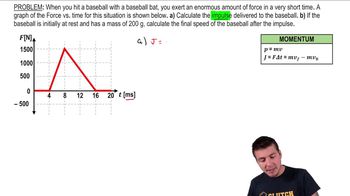Impulse with Variable Forces definitions Flashcards
 Back
BackImpulse with Variable Forces definitions
1/15
Terms in this set (15)
- ImpulseThe change in momentum of an object, calculated as the area under a force vs. time graph.
- Force vs. Time GraphA graphical representation where the area under the curve indicates the impulse applied to an object.
- Positive ImpulseImpulse represented by the area above the X-axis on a force vs. time graph, indicating positive force.
- Negative ImpulseImpulse represented by the area below the X-axis on a force vs. time graph, indicating negative force.
- MomentumThe product of an object's mass and velocity, which changes due to impulse.
- Impulse-Momentum TheoremA principle stating that impulse is equal to the change in momentum of an object.
- Newton-secondsThe unit of impulse, equivalent to the change in momentum.
- Triangle AreaCalculated as 1/2 base times height, used to find impulse in force vs. time graphs.
- Rectangle AreaCalculated as base times height, used to find impulse in force vs. time graphs.
- TrapezoidA shape used to calculate areas under a curve in force vs. time graphs for impulse.
- Final VelocityThe speed of an object after an impulse has been applied, calculated using the impulse-momentum theorem.
- MassA measure of the amount of matter in an object, used in calculating momentum and impulse effects.
- BaseThe horizontal length of a geometric shape on a graph, used in area calculations for impulse.
- HeightThe vertical length of a geometric shape on a graph, used in area calculations for impulse.
- RestThe state of an object being stationary, often used as the initial condition in impulse problems.


